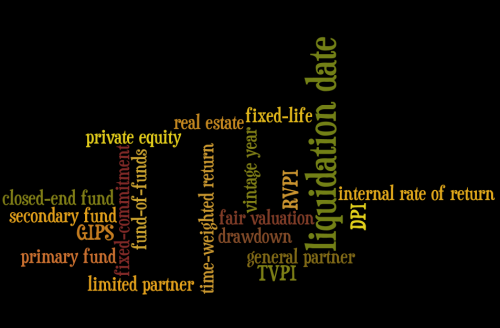 Occasionally when I am doing GIPS verifications, I come across situations where a firm has a fixed-life, fixed-commitment investment vehicle that they want to present performance for in compliance with the GIPS standards. Because the firm controls the external cash flows (in the form of capital calls), they want to follow the private equity provisions of GIPS, which dictate that firms show since-inception internal rate of return (SI-IRR). The only problem is, their fund does not invest in private equity. But, the firm feels that, because of the structure of the investment vehicle and the fact that the manager controls the external cash flows, they should be able to apply the private equity provisions of GIPS.
Occasionally when I am doing GIPS verifications, I come across situations where a firm has a fixed-life, fixed-commitment investment vehicle that they want to present performance for in compliance with the GIPS standards. Because the firm controls the external cash flows (in the form of capital calls), they want to follow the private equity provisions of GIPS, which dictate that firms show since-inception internal rate of return (SI-IRR). The only problem is, their fund does not invest in private equity. But, the firm feels that, because of the structure of the investment vehicle and the fact that the manager controls the external cash flows, they should be able to apply the private equity provisions of GIPS.
This is when I have to break the news to these firms that while I agree that SI-IRR is the appropriate measure to use… unfortunately, GIPS requires that the firm show time-weighted return (TWR) instead!
To explain:
The private equity provisions of the GIPS standards apply to the following types of investment vehicles that invest in private equity:
- Fixed-life, fixed-commitment private equity investment vehicles (could be primary funds or funds-of-funds)
- Fixed-life, fixed-commitment secondary funds
The given investment vehicle must invest in private equity.
In the above cases, the investment manager (typically a general partner) controls the external cash flows. Since inception internal rate of return (SI-IRR) is used to present performance in this case, rather than time-weighted return (TWR).
The only other case where GIPS requires the use of SI-IRR is for closed-end real estate funds. In that case, both SI-IRR and TWR must be presented.
Otherwise, GIPS requires presentation of TWR for any other investment vehicles, even if the manager controls the external cash flows. A strong argument could be made that SI-IRR is what GIPS should require in these cases (and we agree with that argument). Thus, if they have an investment vehicle that is fixed-life and fixed-commitment, but does not invest in private equity (or real estate), then I recommend they do the following:
- Show annual TWR, as required by GIPS
- Show SI-IRR as of the end of each annual period, labeled as supplemental information, with sufficient disclosures to explain what SI-IRR is and why it is an appropriate return measure to use for evaluating their strategy.
I don’t know all the reasons why we didn’t end up with a GIPS 2015. Requiring the use of SI-IRR for scenarios such as this would have been high on the list of changes I would have suggested for a GIPS 2015. Prior to GIPS 2010, closed-end real estate funds were only required to show TWR, but GIPS 2010 addressed the issue for that type of portfolio. But, the standards still have room for improvement on when IRR should be required and/or recommended… this is just one of those scenarios.
Happy studying!
